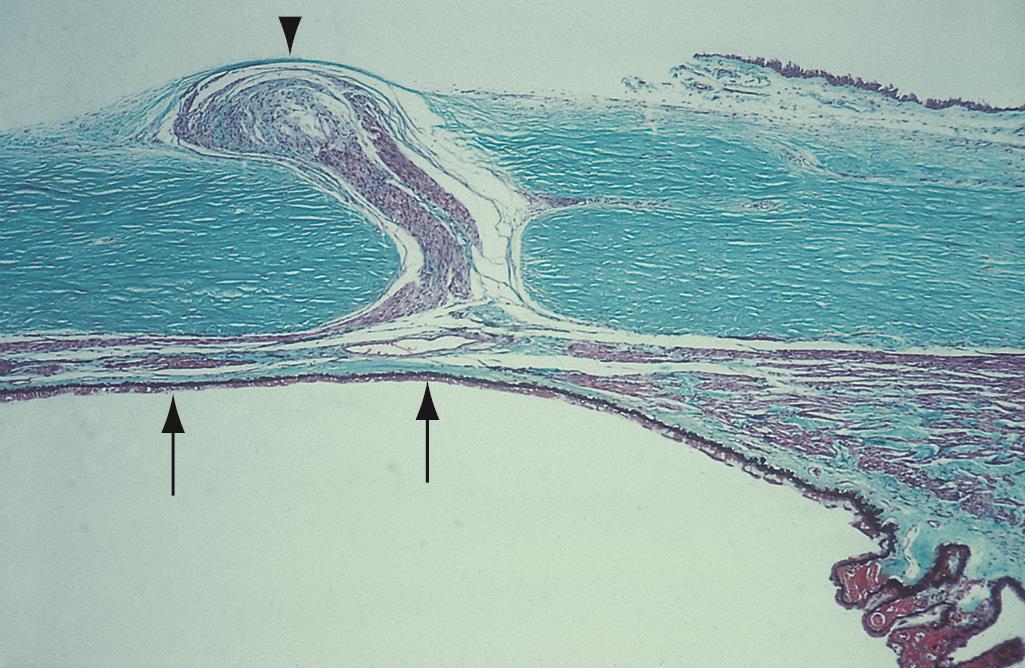Axenfeld Nerve Loop
All content on Eyewiki is protected by copyright law and the Terms of Service. This content may not be reproduced, copied, or put into any artificial intelligence program, including large language and generative AI models, without permission from the Academy.
Axenfeld Nerve Loop
Overview
- Intrascleral nerve loops were first described by Axenfeld in 1902[2]. They are a common, incidental finding on slit lamp examination. It is important to recognize this entity as they may be mistaken for intrascleral foreign bodies.
Detailed Description
The term “Axenfeld Nerve Loop” is used to describe intrascleral nerve loops of the long, posterior, ciliary nerves. The ciliary nerve pierces the sclera near the optic nerve and travels within the sclera and suprachoroidal space until it branches at the level of the ciliary body[2]. The nerve loop is an anastomosis of the long ciliary nerve that turns to enter the sclera before turning back again to continue to the ciliary body[3]. The examiner may elicit pain if the loop or overlying conjunctiva are manipulated – as is common when probing for traumatic injury. The loop commonly appears as a grey, white nodule under the bulbar conjunctiva. It may be surrounded by pigment, especially in those with a darker iris. They are typically found a constant distance from the corneoscleral junction, usually within 3-4 mm of the limbus.
Epidemiology/Risk Factors
- None
Histopathology
- Pathologic examination would reveal findings consistent with a peripheral nerve.
Differential Diagnosis
- Nevi
- Malignant Melanoma
- Cysts
- Scleral Foreign Bodies
Management/Treatment
- No therapy is needed – this is a natural, anatomic landmark. Several cases have been reported of anterior nerve sheath tumors arising from intrascleral nerve loops[4].
Prognosis
- Very good.
References
- ↑ American Academy of Ophthalmology. Stroma. https://www.aao.org/image/stroma-2 Accessed Deceneber 3, 2021.
- ↑ Jump up to: 2.0 2.1 Axenfeld UMT: Ueber intrasklerale. Nevenschleifen. Ber Dtsch Ophthalmol. Ges 30: 134-137, 1902.
- ↑ Reese AB. Intrascleral nerve loops. Trans Am Ophthalmol Soc. 1931; 29: 148-153.
- ↑ Chang, Glasgow. Evidence that Anterior Eiscleral Nerve Sheath Tumors Arise From the Axenfeld Nerve Loop. Archives of Ophthalmology 127 (8): 1060. August 2009.


